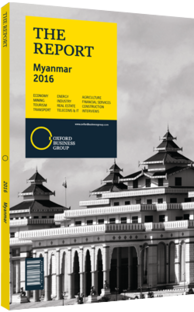Cooperation with international players will benefit Myanmar banks and customers
In 2015 foreign banks started operating in Myanmar for the first time since 1963. A total of nine branch licences were issued. The licences will be highly restrictive at first, and the banks will only be able to do business in foreign currencies, they will be limited to one branch and they will not be able serve retail clients. The step is a key move towards liberalisation for the country, as it will bring capital to a growing economy that needs funding and introduce controlled competition, technology transfer and best practices.
Here For Years
Myanmar has a long history with foreign banks. Before 1963, 14 such institutions operated in the country. After the reforms of 1990, Myanmar started to allow representative offices. It even toyed with the idea of joint venture banks, although that plan was put on hold after the 1997 Asian financial crisis (see overview). Singapore’s DBS Bank has had a representative office in Myanmar since 1994 and Malaysian-headquartered CIMB has been in the market since 2008. However, most banks established representative offices following liberalisation in 2012, including Siam Commercial Bank and Maruhan Japan Bank in 2012, and Standard Chartered Bank in 2013. In total, 48 such licences have been issued and 26 of the banks have commenced operations.
Since the country announced in 2014 that it would allow foreign banks to set up branches in the country, a total of 30 institutions have expressed interest, of which 25 eventually filed applications. Banks from 12 countries were on the list, including four from Japan, four from Malaysia, three from Singapore, three from South Korea, three from Taiwan, four from Thailand and one from China. Unexpectedly Standard Chartered did not apply, and the only Western bank to file an application was the Australia and New Zealand Banking Group (ANZ Bank).
New Licences
In October 2014 nine licences were issued. The banks that received permission included: Japan’s Bank of Tokyo Mitsubishi (BTMU), the Sumitomo Mitsui Banking Corporation (SMBC) and Mizuho Bank; Australia-based ANZ Bank; Singapore’s Overseas-Chinese Bank (OCBC) and United Overseas Bank; Malaysia’s Maybank; the Industrial and Commercial Bank of China; and Thailand’s Bangkok Bank. The first to open its doors was BTMU, which started business on April 2015. OCBC was next in August 2015, and ANZ Bank opened in October 2015.
On January 5, 2016 invitations were sent out to banks for the “second round” of licences. Expressions of interest were submitted on January 9, 2016. Industry analysts expect Korean, Taiwanese and Vietnamese banks will express significant interest.
Some institutions are demonstrating their commitment to the market. Foreign banks are required to fund their operations with at least $75m, but BTMU has already committed $100m. SMBC said it has come with $200m in capital, as did Bangkok Bank.
Jumping In
Despite the restrictions, new financial institutions are hoping to get very involved in the country, offering a wide range of services and targeting growth areas of the economy. Maybank has said it will be doing project finance and lending for corporations. It will be focused on infrastructure investments, such as those related to power, oil and gas, telecoms and transport.
Foreign banks can partner with local institutions. BTMU, for example, will offer technical support to Cooperative Bank, and SMBC is working with Kanbawza Bank (KBZ Bank). Domestic banks can also be used as a conduit to reach the local currency market. Despite the restrictions they face, foreign banks will be able to lend to their local counterparts. This will bring them exposure to Myanmar’s kyat market. The presence of foreign banks could also lead to consolidation. SMBC has said that it would be interested in a stake in KBZ Bank – 15-20% of the equity. This would require regulatory changes, as the central bank does not currently allow foreign investment in local banks.
You have reached the limit of premium articles you can view for free.
Choose from the options below to purchase print or digital editions of our Reports. You can also purchase a website subscription giving you unlimited access to all of our Reports online for 12 months.
If you have already purchased this Report or have a website subscription, please login to continue.

